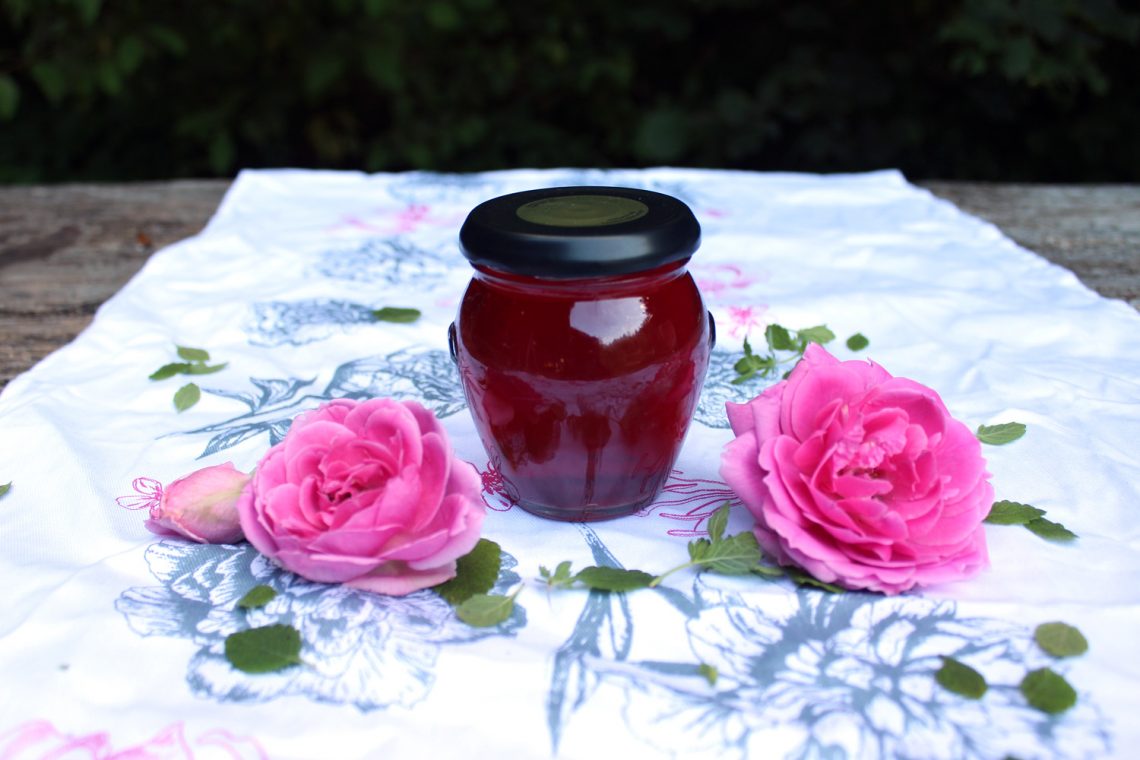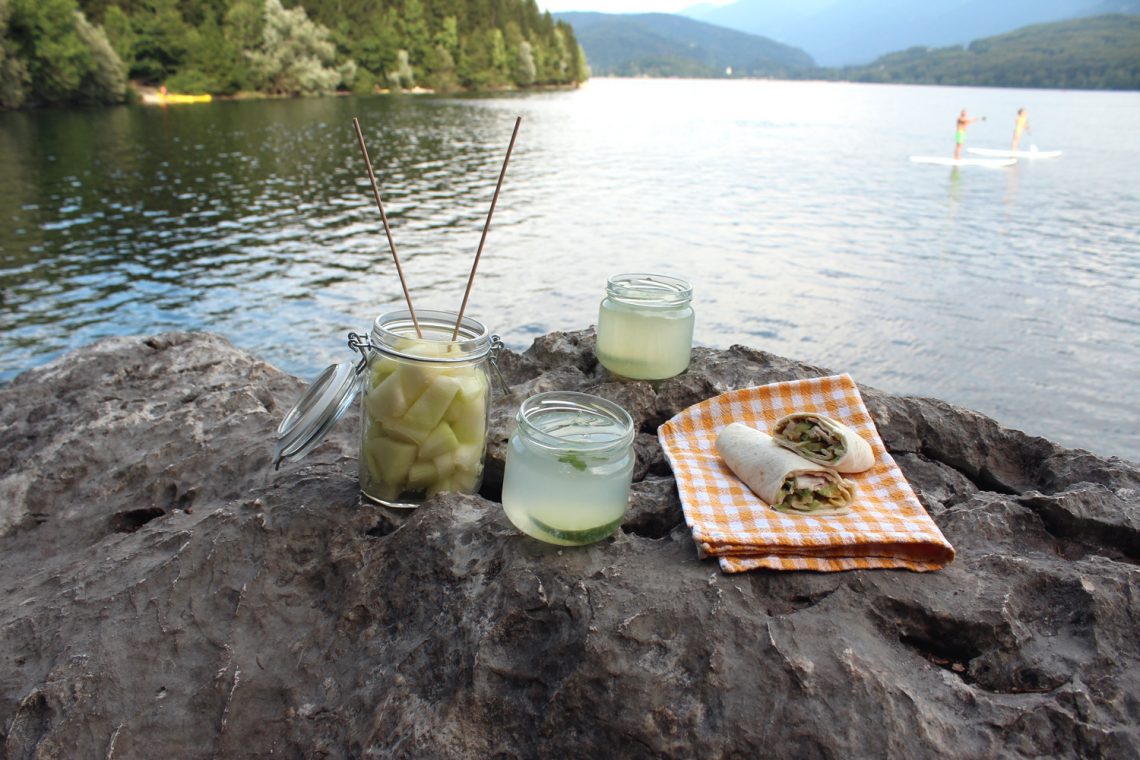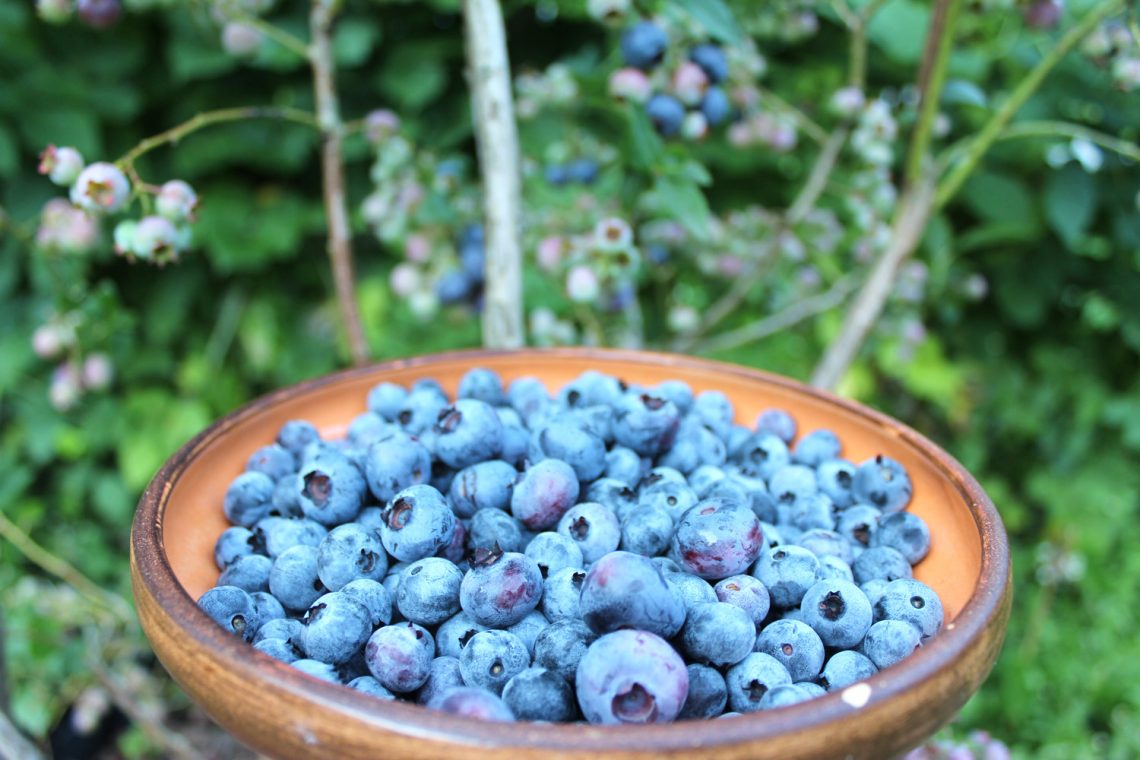We all know that vegetables are good for us, right? The one that we manage to produce at home and we put our time and effort into it usually tastes even better than the one we buy. Not many vegetables can surpass the garlic in its health benefits. So this post is my ode to homegrown garlic. All my attention and efforts were repaid this past week when I harvested my garlic. Garlic’s health benefits were known long before Google. They were known and written about in the old Egypt and also by the ancient Greeks and Romans. It’s also well known in Chinese medicine.Continue Reading
Articles by petra
How to make homemade rose water
Homemade rose water – water made from roses. It’s valued in cosmetics, where they call it a magical beauty potion. French pastry chefs use it to prepare desserts. Some people around the world also believe in its healing powers – it’s supposed to help with a sore throat, but there is no evidence to support that claim.Continue Reading
Lake Bohinj Trip and Zero Waste Picnic
As a little f**k you to the heat that’s been unbearable the last week we decided that it was time for refreshment. As a change of scenery, we took a short break from working at home and in the garden and went on an afternoon trip to Lake Bohinj. By “we” I mean Aljaz, me and our dog Deedee.Continue Reading
Vegetable soup
Vegetable soup that I decided to prepare today is so easy that I like to think that back in the day women would cook it with everything that could be found in the garden at the time. It’s so easy to make, yet so delicious!Continue Reading
Blueberry
Blueberry – my first plant of the week. If things go according to plan, I’ll be researching and introducing one plant a week that I’ll (how surprisingly) call Plant of the week. This will either be a vegetable, fruit, herb or even decorative or wild-grown plant.
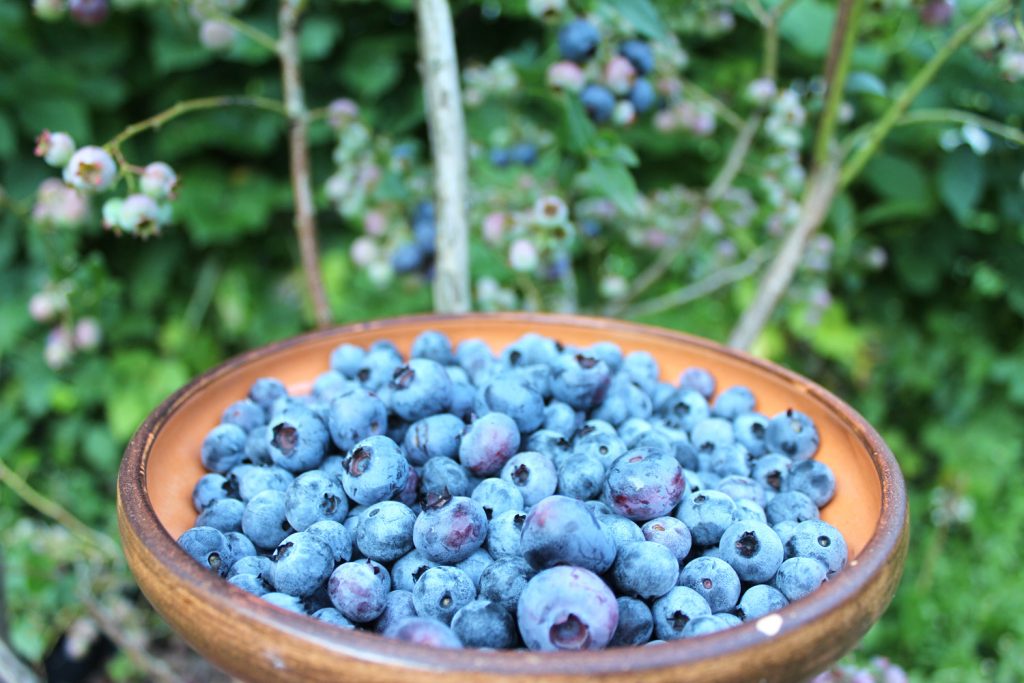
WILD BLUEBERRY’S FAT COUSIN
Today, in sync with the season i’m starting the Plant of the week series with the plant that I wasn’t too fond of until recently. This is cultivated (highbush) blueberry – the “fat cousin” of wild (lowbush) blueberry, which we also call the forest blueberry because (not like the cultivated variety) they can be found in the forests all accross Slovenia. Cultivated bluberries are also called American blueberries around here. Maybe it’s due to their name or foreign ancestors but I found cultivated blueberries strange and uninteresting for a long time. Maybe it was due to their way of planting or the need of acidic soil and therefore require a special place in the garden or even it’s own container. Although I’m a big fan of wild (forest) blueberries and I pick and eat them constantly when they’re in season, i hardly ever ate cultivated blueberries. We hada sall blueberry bush at my parents’ house but it never beared fruits or maybe we were always too late to protect it from greedy birds who ate all the berries before we even noticed them?

HOW TO GROW BLUEBERRIES?
Anyway, as I was saying, blueberries weren’t on my radar until last year when I planted two plants in pots and placed them at the edge of my garden. The pots are made from old wine barrels that we salvaged from the house where Aljaz’s grandmother was born. We sawed the barrel in half, added new layer of stain to both halves and padded them with pond foil and drilled holes at the bottom.
When the pots were done, i filled them with peat and acidic soil and planted the two blueberry plants. While you can get peat in almost every garden center, you can collect acidic soil for free from the forest! Some say that the best acidic soil can be found under pine trees, other that the best in the one from under an oak tree. I mixed both types and so far, my blueberries are not complaining. During dry and hot summer I water the blueberries once a week and I rely on my instinct for watering during the rest of the year. Cultivated blueberries are cold hardy in zone 7 where my garden is located, so I don’t transfer them inside during the winter or move the pots at all.
Both of my blueberries are the early bearing variety. Although you don’t need more than one variety in the garden for successful pollination (they don’t share the pollination problem with Kamchatka honeysuckle cousins) we can prolong the harvesting season by planting varieties that bear fruits at different parts of the season (early-, middle-, late-season ripening).
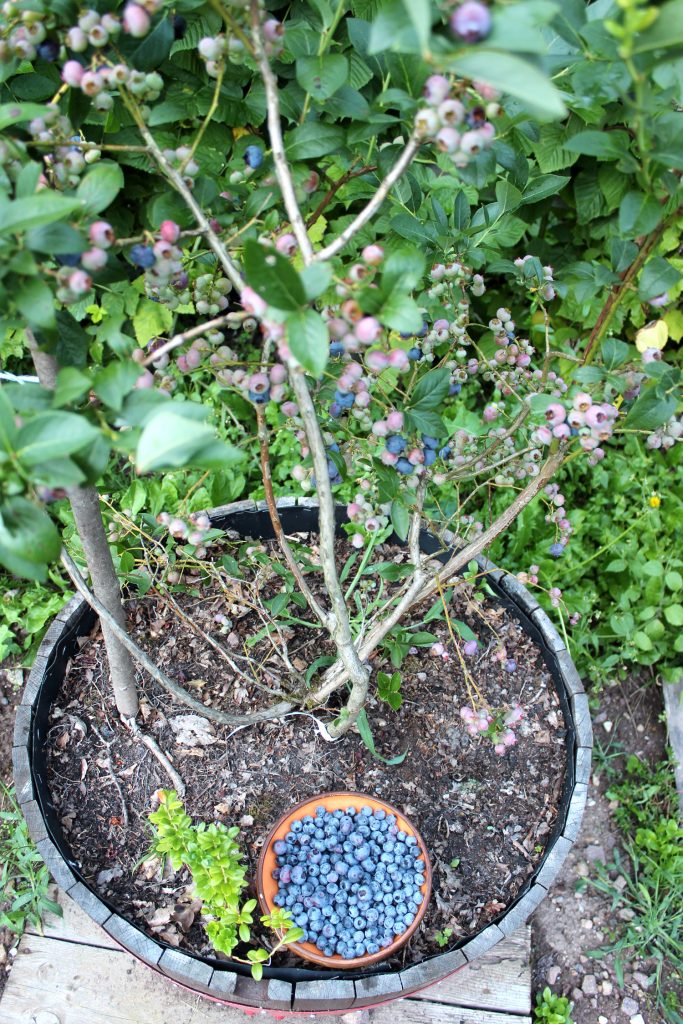
Use and storage of blueberries
We eat most of homegrown blueberries fresh either in the morning, mixed in Greek yoghurt or in the evening as a snack during a new Game of Thrones episode so there isn’t much left for storage. Blueberries can be stored the same as all the berries: cooked in jams, dries or frozen and later used in smoothies, pies or other delicious dishes.
Short blueberry ID:
Special growing needs: require acidic soil
Adult plant height: up to 2m (usually more around 1.5m)
Storing the blueberries: freezing, drying, jams
Why would you want to consume blueberries? Despite the fact that a lot of people still prefer wild, forest blueberries over their cultivated cousins, are homegrown blueberries a great source of antioxidants and numerous vitamins and minerals. They have low caloric value and they help regulating blood sugar and have positive impact on our brain and heart functions.
Not to mention how nice looking are the blueberry shrubs in the garden when they are filled with delicious blue berries!
Conclusion: Very worth of growing (and eating)!
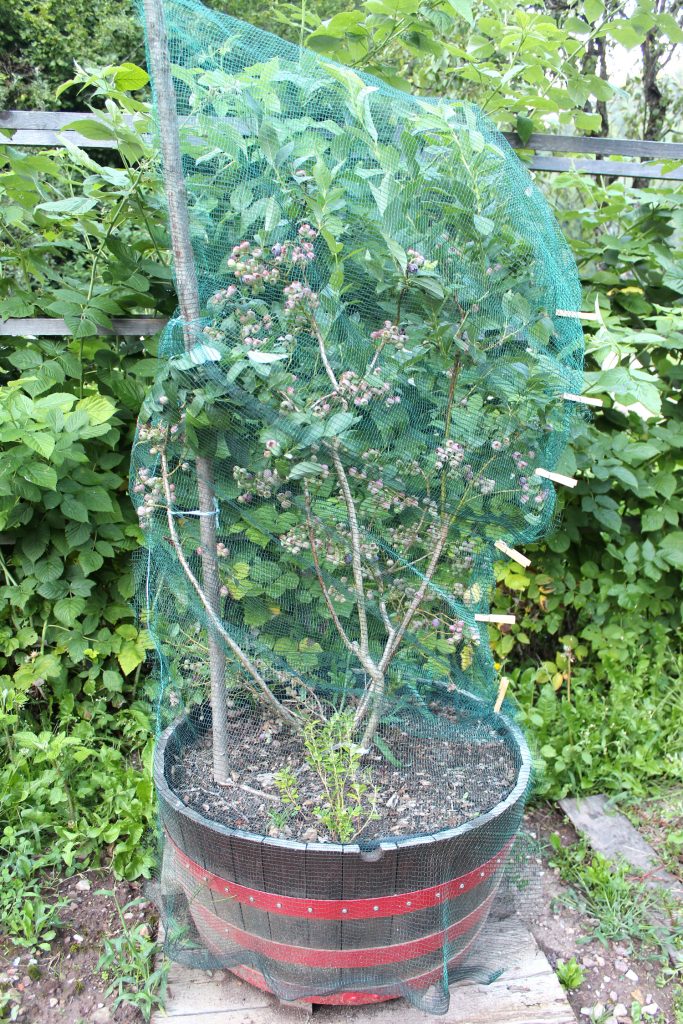
How to start a garden?
….. or what I’ve learned in my first two years of gardening.
When did it all begin?
For the beginning of my gardening endeavors I would have to go back to when I was somewhere between 8 and 12 years old and I was helping my mum in the garden. I don’t remember to have ever sowed or planted any seedlings in our garden but I do remember weeding between the tiny carrot and lettuce plants. During weekends when my mum would be preparing lunch, me and my sister would spend the mornings in the garden, battling the weeds. I remember being fascinated with the transformation of the tiny seedlings to strong carrot or lettuce plants by the end of the summer. My chore during early autumn days would be peeling the carrots so that my mum could freeze them and use them in winter beef soups.
Except for these occasionally assigned tasks, I didn’t show any interest in the gardening during my childhood and especially puberty years. The story repeated itself during high school and for the most part of my undergraduate life. Mum would take care of the garden while me and my sister would help with the harvesting and storing the produce.
In my first year of master’s degree studies I moved to a house that had a huge garden in the front (!!) yard. I remember looking across the empty garden in the spring and asking myself how can a single person take care of such a large garden. The front yard is clearly visible from both the living and dining room of the house so “Out of sight out of mind” approach wouldn’t work in this case.
My mother and grandmother were in charge of the garden during my first summer at the house. They have started so it was only fair that they finished the season as well. I was going to school and didn’t put too much attention to the garden.
The thought of taking over the garden has first crossed my mind in the autumn of 2015, when I settled in the house and I started monitoring my expenses. I noticed that I was spending (way) too much money on fairly low quality and low-energy-providing food. I started to develop an interest for growing my own food. I spent the winter of 2015/2016 researching gardening and self-sufficiency. I was fascinated by all the plants that I could grow on my garden and that were impossible to buy in the store. Next to plants I also researched processes for storing the produce during the winter months. Later on I also stumbled upon making homemade cosmetic, plastic-free lifestyle and other subjects that go hand in hand with self-sufficiency.


Year 2016
In spring 2016 it was go time. I had a lot of help from my mum, who provided me with all the seedlings that I needed. She has chosen the same varieties of veggies as she did for herself , the same ones that have been part of our delicious meal for years. I started planning my own garden. I tried to take in to account crop rotation which can be quite challenging.
My first year gardening could be summoned in these points:
1. Weed battle
The number one problem in my garden was weed. It’s quantity remained about the same during the year but it’s varieties have changed depending on the part of the season.
2. Abundance of beans and lack of tomatoes
Beans and other legumes were growing wonderfully in my location. I guess they like the sun/shade ratio that is due to the fact that the hill behind the house would cast an afternoon shade. Quite the opposite has happened with my tomatoes. Despite the aggressive growth and a lot of showing fruits, the plants were infected with rust and have deteriorated. I haven’t produced a single tomato. that year.
3. Bad organization and watering schedule
This was the year when I was watering the garden without any plan. Often it happened that I forgot which part of the garden has been watered and which one should be watered next. Watering turned out to be a huge burden and a big source of issues.
4. First perennial planting
My first perennial planting was an L-shaped raspberry bed at the edge of the garden. Aljaz and I both love raspberries and in case of abundant harvest you can always freeze and use them in smoothies and deserts so all the things in favor of making a raspberry bed. In the autumn of 2016 we made the construction and planted our raspberry plants.
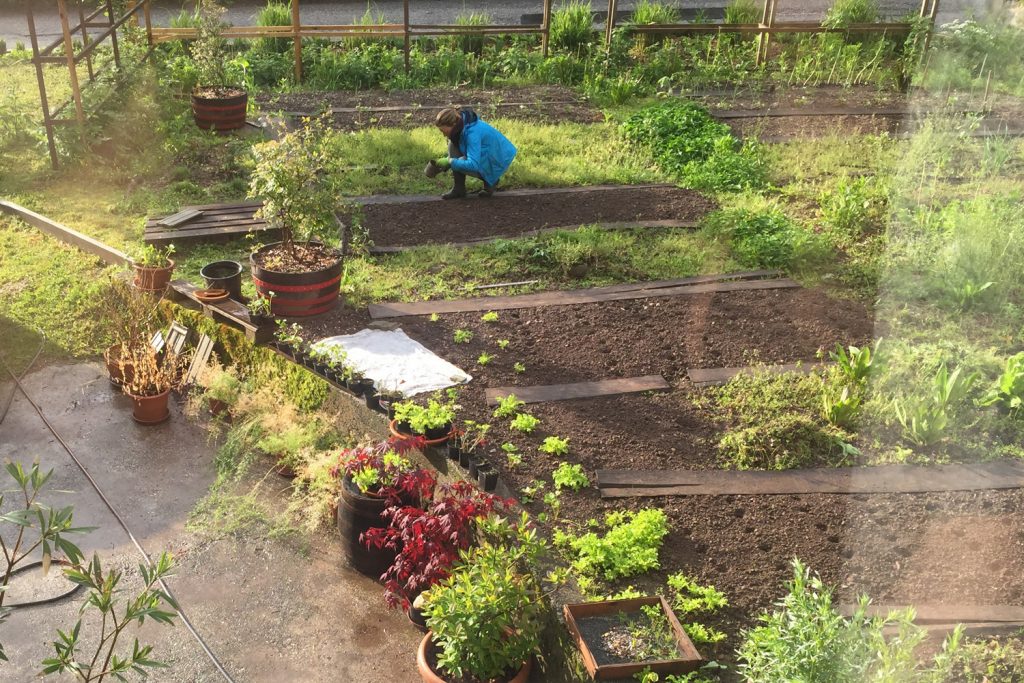
Year 2017
I entered the 2017 gardening year determined and equipped with new knowledge. During the winter I read about permaculture and biodynamic. My gardening notebook is full of marks about effects and power of the moon (the moon calendar is the foundation of biodynamics) and the plants. I also read about herbs that can be picked in the wild or grown in the home garden.
Full of fresh knowledge I started the new gardening season. During the planning phase I picked all that plants that will grow in my garden this year. Each plant had a place in the garden. I also started planning the floral beds which would be places at the edge of the garden.
My second gardening year could be (up until now) summed in the following points:
1. Trying out new varieties of vegetables and herbs
This year I chose my own vegetable varieties that I decided to plant. Of course I sill listened to wise advise of my mother but I started to gather the courage to experiment. So this year my garden is also hosting more exotic vegetables and herbs like peruivan groundcherry, strawberry spinach, pepino, chickpeas and citron verbena.
2. Expanding perennial beds
Next to my last year’s respberry bed I also added an asparagus bed and began to plat an edible hedge made from different varieties of berry shrubs.
3. Petra : weed – 1:0
This year most of my garden is covered with mulch. I use leaves and old hay and both work great. Not only as a vital weapon in my weed war but also for it’s ability to contain water in soil which is vital in the dry summer we’re having here this year.
4. If you can’t get rid of it, eat it!
During my intense battles with weed i couldn’t help but to think about the possible use of weed in my everyday cooking. Maybe some varieties of weed are edible or even extremely tasty and would be prefect for cooking? During one of my visits to the local library I found the book Wild food (Divja hrana) by Dario Cortese and behold – I found some of my enemies in there. From then on they are a part of my salads or side dishes. I tell you, they’re amazing! 🙂

Introduction
Hello world! 🙂
The following is my first House by the Woods blog entry. I feel that I should introduce myself and clarify why I’ve decided (as so many have before me) to start writing my very own blog.
I hope that through the next few line you’ll be able to get to know me a little bit better and see I you might be interested in what I have to say in the future.
Who am I?
Hi, my name is Petra. When I finished my masters program, I got a job and moved away from my parents’ house I was faced with my first big trip to the grocery store. If my mum would usually do this kind of shopping it was now on me. Slowly grocery shopping went from something exciting to a chore. And it was an expensive chore. Pretty soon I realized that a lot of food on the shelves contained ingredients that I couldn’t pronounce let alone understand their meaning. So I decided to try to grow (and process) as much food as I can on my own. I’m a big believer in self-sufficiency because I believe that homegrown “real food” is the healthiest and tastes the best (it’s also the cheapest). Next to my full time job I spent my free time in the garden and on a small homestead that is owned by my parents.
Next to growing my own food I’m also trying to change my lifestyle. My goal is to live a more natural and sustainable life. I would like to learn more on how to make my own cosmetics and getting to know and pick herbs for my own tea mixtures.
In the future I would also love to be able to renovate the house that I currently live in and that I affectionately call House by the Woods. The house was built in 1950s and is in need of a total renovation so (if it ever comes to that) there might be some posts about that venture as well. Any way I love doing small DIY home improvements so you will be able to read about that as well.
People who know me would describe me as precise, conscientious and sometimes dreamy because I tend to think about and plan things which are (according to people around me) undoable. I sincerely hope that this blog will not be one of those things. I fully realize that it will take up a lot of my time, because next to an English version I’ve also decided to write a Slovenian one which you can find on: www.hisaobgozdu.si.
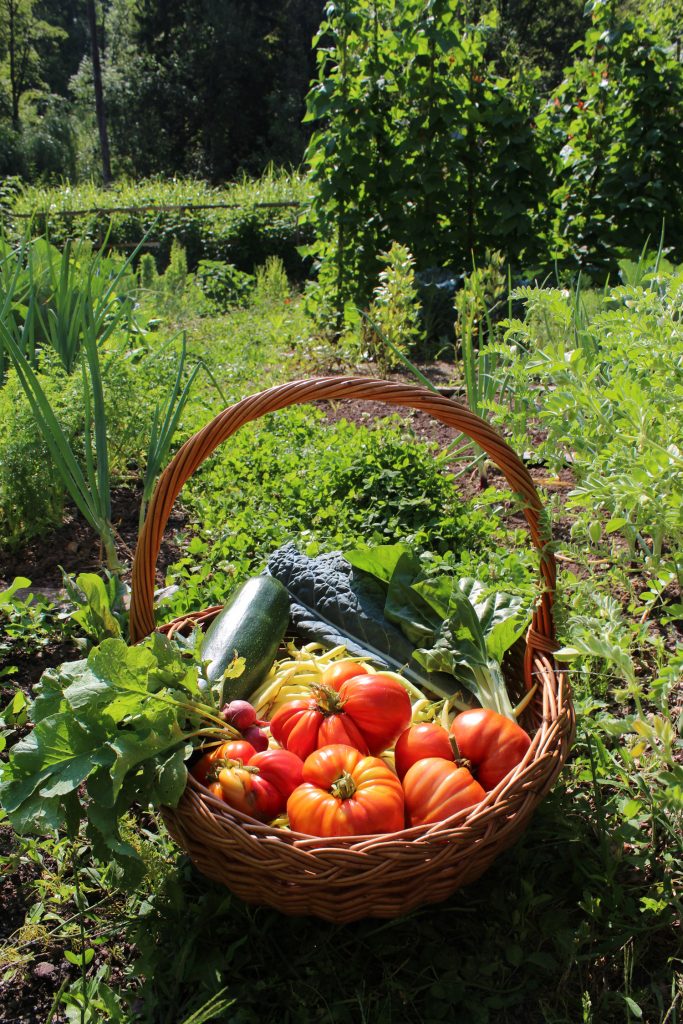
Why a blog?
I’m hoping to use this site as an online diary of my endeavors and little adventures but mostly I wish that someday when I’m older I’ll be able to read my posts and take a trip down memory lane with the things that I tried/cooked/make/grown and experienced. And after all – in this time when we snap a photo basically every day because we want to remember something it would be a real shame if we wouldn’t share our stories with someone else as well, right?
So I’m inviting you to follow my bigger and smaller gardening, homesteading, cooking and other adventures. I want this to be an ongoing story so I’ll try my best to keep this page. Every day I’ll try to post at least one thing. Either that is a photo, some gardening advice, a recipe or a story.

Why House by the Woods?
Because it’s where I live – in a house by the woods. There is my garden in the front yard and only a few feet away there is a creek running by. And because most of the ideas for the writing here are born in (or next to) this house. And at the end of things because I think that this house has a story worth writing about.
What will I be writing about?
Next to garden and gardening I will also write about how to process homegrown produce, my efforts to live a healthy and sustainable life and DIY projects and home improvements. I might also throw in a weekend trip or two and my conscious buys with which I try to support local and handmade products and services.
House by the Woods in six months…
I hope that all the categories of the blog will be nicely filled and that I’ll be hard-working and consistent and to maybe inspire someone who will read this to start their own garden (she wrote, optimistically staring in the future…).
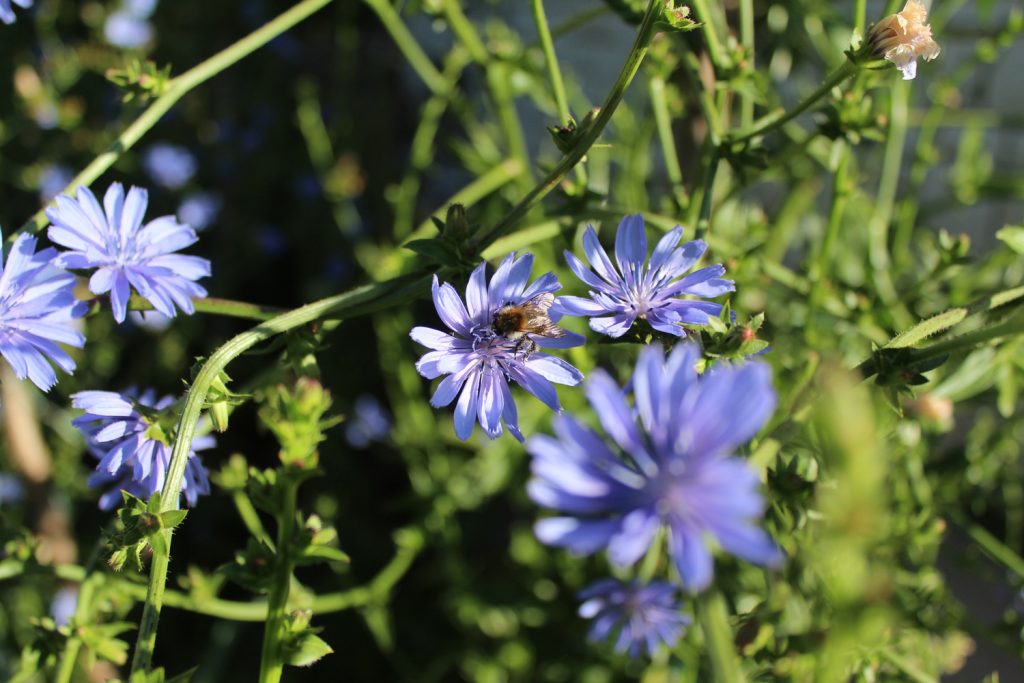
Who is this blog meant for?
This blog is for everyone who find themselves in one of the subjects presented above but most f all is meant for everyone who appreciate and wish to grow your own food and live a fulfilled, natural and sustainable life.
I strongly encourage all of you who are (or will) read my writing to comment my posts and ask questions if you have any.


